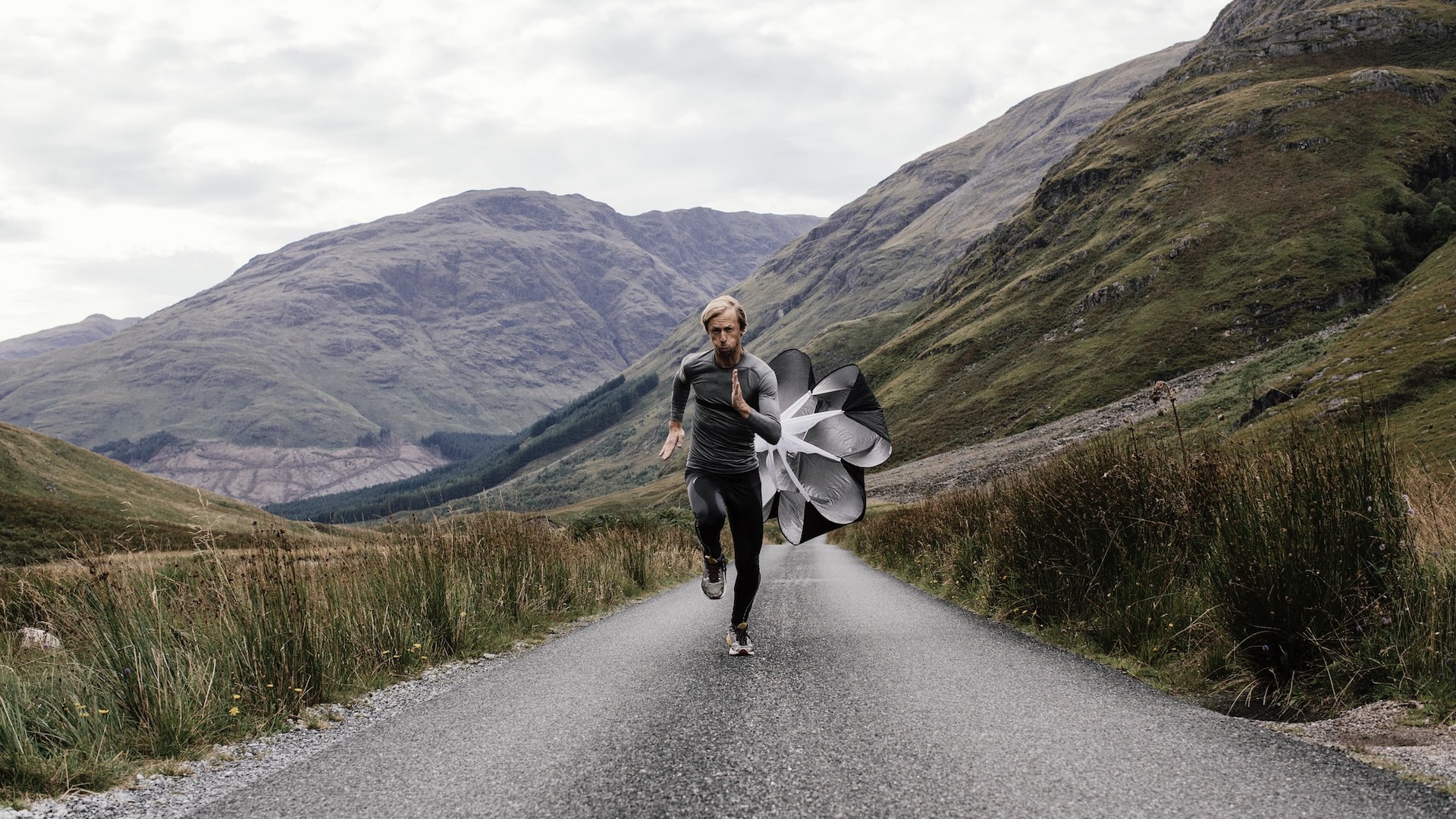Interval training for runners – what are the benefits?
Our expert guide on how and why to include faster or harder repetitions to your run training

In its purest form, interval training for runners is the method of breaking up training sessions into shorter segments – or intervals. Classically, the intervals will comprise a set of faster or more intense repetitions (reps), each followed by a short period of recovery. The aim is to create a stimulus for the body to work harder at a certain intensity or pace.
From a general point of view, interval training is seen as a way to boost fitness, so that while it is recommended that everyone takes part in moderate aerobic exercise for 30 minutes five days per week, alternatively you could perform vigorous aerobic activity for at least 20 minutes three days per week to meet this recommendation.
Interval training for runners is an efficient way to maximise aerobic improvement, while minimising the overall time spent per workout.
However, as experienced running coach Nick Anderson points out, for interval training to be useful and effective, you must first work out what the aim is.
He says: “It is important understand what a runner's goals are, for example whether they are looking to increase speed over a shorter distance or to to hold a faster overall pace over a longer distance, such as an ultra race.
“In this way, the interval training might take the form of a classic – or traditional – set of shorter intervals, with the aim of improving speed and strength for shorter distance races, or it could be longer intervals held at a pace that you hope to be able to achieve in the future on a longer distance race.
"Not all interval sessions are the same and so it's important to know the desired outcome for a race first."
Advnture Newsletter
All the latest inspiration, tips and guides to help you plan your next Advnture!

First things first: an aerobic base
But before interval training is introduced, Nick, who has worked as a coach with England Athletics and is part of the Saucony UK team, reports that it is important that runners have a good aerobic base.
He says: “There is no point in simply going out and running faster or more intense intervals, such as hill reps, if a base aerobic fitness is not already there.
“My advice for runners is to first build up through the miles, gaining aerobic fitness. Once this fitness has been gradually built then, as a coach, I would look at what the end goal will be. Each runner is different and they will be looking for different outcomes. It’s why it is a good idea to work with a professional coach if you have a particular aim or race target.”
Nick calls this form of build up “layering”. He explains: “Runners should build aerobic fitness and then layer on more specific sessions, including interval training. Other layers might include strength and conditioning sessions.
“For example, we talk about threshold or tempo running. The concept of threshold running is running at a pace where lactate does not accumulate significantly in the blood during the workout, but rather stays at a constant level. The goal of threshold training is to perform slightly below or at the lactate threshold level.
“After this, we would introduce intervals at the right times in a training programme and in phases. All of this layering will take a runner to the goal that they have set.”

How can I do interval training?
Many runners are introduced to interval training at a running or athletics club. Interval sessions might take place on a track, for easier measurement of distance and time, or on a section of track or road. Depending on the goal, the intervals could be on a flatter terrain or on hills.
For the best outcome, interval training sessions should be customised to suit each runner and their individual goals. A professional coach will tailor a running program to suit a goal and it will most often include interval training of some kind.
An example of interval running session might include a few minutes of jogging to warm up, then a set of short bouts or reps of high intensity running, followed by short periods of lower intensity jogging, walking, or rest in between each rep.
The high intensity pace for interval running exercise is likely to exceed what you could physically sustain for 30 minutes, while a lower intensity pace allows you a brief recovery for the next high intensity pace.
Depending on the desired outcome or level of fitness, an interval period might last between 10 and 60 seconds at a high intensity pace, and then between 10 and 60 seconds at the lower intensity pace.
The specific duration of each rep, including the ratio of high intensity to low intensity time in each cycle, varies based on your specific fitness goals and fitness level.
This ratio of high intensity to low intensity is called the work-rest ratio and it’s a key variable in designing interval running programmes.
The frequency of interval training sessions in a running plan will depend on the race distance. Nick explains: “For example, it's likely that a 5k runner will complete more frequent higher intensity interval sessions than a marathon runner.”
In essence, overall, the structure of interval running plans allow far more time spent running at higher intensities compared to a traditional running programme.
If customised to each person and when combined with a basic aerobic fitness, higher intensity intervals are more likely to result in greater improvements in a runner’s maximum aerobic capacity and will also work more muscle fibres overall compared to longer, slower jogs.

Benefits of interval training for runners
Psychologically, breaking down a session can overcome the potential boredom of running the same distance or the same route time after time.
The intervals allow a runner to work at higher intensity during a run and this offers new targets, which can maintain mental focus.
There are bio-mechanical benefits, too, because intervals at a faster pace allow the body to get used to "feeling faster".
Nick, who is a UKA level 4 endurance coach and founder of Running With Us, says: “Runners talk about having the feeling of runner faster. Instead of running in a comfort zone, there is the up-lifting feeling of running faster.”
He adds, “Running faster and having the feeling of working harder is great for a runner's confidence, too,” he adds. “This allows a runner’s inherent speed to shine.”
Should I try interval training?
“If a training plan, including intervals, is well thought out and planned by a professional coach,” Nick tells Advnture, “then this type of training is for everyone.
“You could be a 800m or 1500m runner, or someone training for an ultra race, but given the right interval training there will be benefits physically and psychologically.”
All ages of runners will benefit from intervals, although Nick makes it clear that as we get older, there is a greater need for recovery between harder interval sessions.
He adds: “We naturally lose speed and power as we age – from about the age of 25, actually – so we should be doing regular strength work as well as higher intensity invtervals if we want to maintain speed or reverse the process of becoming slower.”
Are there any pitfalls of interval training for runners?
Nick believes that too many runners believe they can use intervals as a way to get fit but he says: “Runners need to become fitter through steady running and threshold running first, before adding interval training.
"If this layering process doesn’t happen there is a greater chance of injury and also of becoming more negatively impacted mentally because people are not achieving their hoped for goals.”
In addition, because higher intensity interval running puts more stress on muscles, there is a potential for injury so runners need to ensure they warm up before a training session and then ensure enough recovery afterwards.
In conclusion, interval training is a great addition for many running goals and for people of all ages, but it is important that is is customised to suit the individual and for a specific goal.

Fiona Russell is a widely published adventure journalist and blogger, better known as Fiona Outdoors. She is based in Scotland and is an all-round outdoors enthusiast with favorite activities including trail running, mountain walking, mountain biking, road cycling, triathlon and skiing (both downhill and backcountry). Aside from her own adventures, Fiona's biggest aim is to inspire others to enjoy getting outside and exploring, especially through her writing. She is also rarely seen without a running skort! Find out more at Fiona Outdoors.
